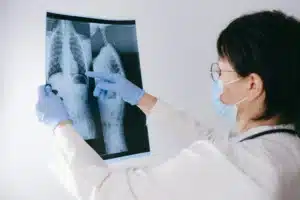
Menu

Anesthesia CPT codes are critical for accurate healthcare billing, directly affecting reimbursement and compliance. Their correct use is essential for anesthesiologists and healthcare providers to ensure financial and regulatory accuracy.
These codes are specific codes such as 00170 and 01992. These codes are part of the Common Procedural Terminology (CPT) system, managed by the American Medical Association. Each anesthesia code corresponds to a specific procedure, reflecting factors.
This guide aims to enhance the knowledge of anesthesiologists, and healthcare providers, to improve the precision and efficiency of billing processes, ensuring that all services are billed correctly and in compliance with the latest regulations.
These CPT codes are a subset of the Common Procedural Terminology (CPT) codes used to document and bill for anesthesia services provided during various medical procedures.
Anesthesia CPT codes are crucial for accurate billing and compliance within medical services. This section specifically details codes used for general anesthesia procedures.
| CPT Code | Description |
| 00790 | Anesthesia for intraperitoneal procedures in the upper abdomen, including laparoscopy; not otherwise specified |
| 01402 | Anesthesia for total knee arthroplasty |
| 00170 | Anesthesia for intraoral procedures, including biopsy |
| 01992 | Anesthesia for diagnostic or therapeutic nerve blocks or injections (other than neurolytic substances), including imaging guidance when performed |
Understanding the use of common modifiers in connection with general anesthesia CPT codes can significantly enhance the accuracy of billing and compliance. Here are some common modifiers:
| Modifier | Description |
| 22 | Increased Procedural Services: Applied when a service or procedure requires significantly more effort than typically required. |
| AA | Anesthesia Services Performed Personally by Anesthesiologist: Indicates that the anesthesiologist performed the service personally. |
| QX | Qualified Non-Physician Anesthetist Service with Direction: Indicates a CRNA performed the anesthesia under the direction of a physician. |
| QY | Medical Direction of One CRNA by An Anesthesiologist: Used when an anesthesiologist directs a single CRNA. |
This section outlines essential strategies for accurate anesthesia coding, ensuring compliance, and, avoiding common pitfalls that can lead to claim rejections and audits.
Essential strategies and details for maintaining thorough and compliant records to support anesthesia CPT codes.
Overview of frequent errors in anesthesia coding and practical tips for avoiding them.
Medical billers and coders play a crucial role in healthcare settings, ensuring that services are accurately billed and compliant with coding standards. Anesthesia services become even more specific due to the unique aspects of anesthesia CPT codes.
Ongoing education and training are essential for medical billers and coders, especially those specializing in anesthesia. As medical billing codes and regulations are frequently updated, staying informed through continuous learning can prevent billing errors and ensure compliance.
Advanced billing software and coding technology are important for enhancing the accuracy and efficiency of anesthesia coding. Implementing technology solutions that support electronic health records (EHRs) and automated coding tools can help reduce human error and streamline the billing process.
Anesthesia CPT codes play an essential role for anesthesiologists and healthcare providers. Continuous education, the use of advanced technology, and adherence to best practices in documentation and coding are critical for enhancing billing accuracy. Proper use of Anesthesia CPT codes and modifiers ensures all services are billed correctly, supporting the financial stability of medical practices and maintaining compliance with healthcare regulations. This guide not only educates but also assists in refining the complex process of anesthesia billing for better outcomes for patients and providers.



